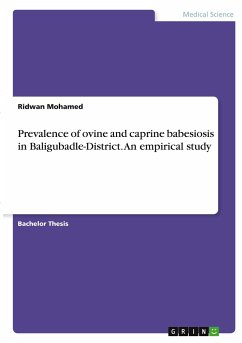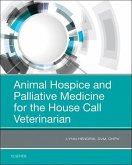Bachelor Thesis from the year 2020 in the subject Veterinary medicine, grade: 4.99, Makerere University (Veterinary Medicine), course: Animal diseases, language: English, abstract: This study was undertaken to know the Babesiosis prevalent in Ovine and Caprine in Baligubadle District, Hawd region, Somaliland. This study will add an additional advantage of the Babesiosis to cover the further way for launching sustainable animal disease controlling and minimizing in Somaliland. However there is little data on national herd distribution and composition up to date. Furthermore there is little information about the prevalence of Babesiosis in sheep and goats in Baligubadle district. Therefore this study is aimed at investigating the prevalence of sheep and goats Babesiosis in Baligubadle district, Somaliland.Ovine and caprine babesiosis is an acute or chronic infectious disease of sheep and goats, caused by two species of Babesia, transmitted by ticks, and characterized by fever, anemia, hemoglobinuria and icterus. Ovine and Caprine Babesiosis is caused by two antigenically different species of Babesia: B. motasi, is a large and more virulent form, occurring singly or paired in erythrocytes; B. ovis which is a small form. The main objective of this study was to establish the prevalence of Babesiosis in sheep and goats in Baligubadle District, Somaliland.Cross sectional study that has been carried out at 19 April up to 15 July in five villages in Baligubadle district. A total of 350 sheep and goats were sampled. Slides were made from a whole blood collected from the auricular vein of the animals. After staining, slides were read under a light microscope.








